No Results Found
The page you requested could not be found. Try refining your search, or use the navigation above to locate the post.
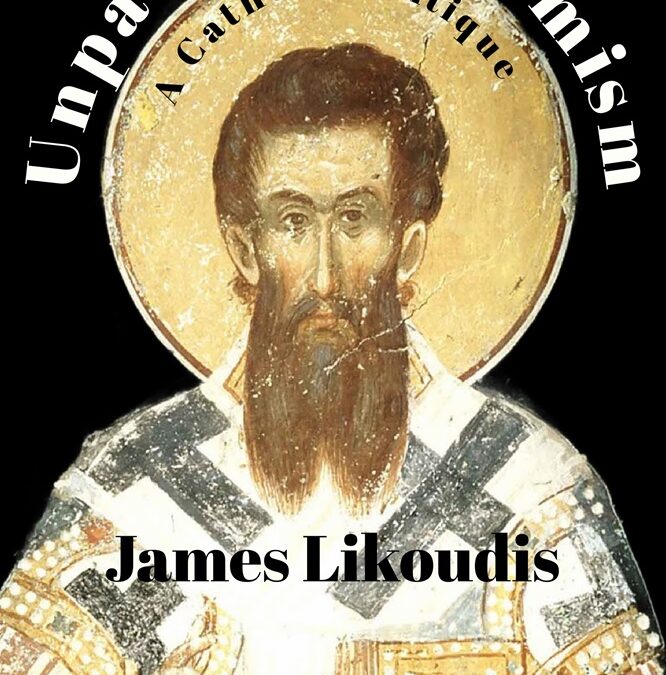
Unpacking Palamism: A Catholic Critique, penned by esteemed scholar Dr. James Likoudis, meticulously scrutinizes the doctrines of Palamism, a theological construct found in Eastern Orthodoxy, but seemingly less than essential to it. This Palamite system, controversially claimed to be foundational to Eastern Orthodoxy, primarily involves the essence-energies distinction made famous by Hesychast monk Gregory Palamas. Dr. Likoudis examines the tenets of this system, discussing their place in Eastern Orthodox theology and ecumenism. He assesses the scriptural and traditional foundations of Palamism, as well as providing a Catholic lens through which to understand it, in the hopes of resolving longstanding difficulties in the way of full unity between the Catholic and Eastern Orthodox Churches.
Paperback: $14.95 | Kindle: $9.99
“James Likoudis deserves much praise for this present volume, which provides a sound Catholic critique of the essence/energies distinction promoted by the Byzantine monk, archbishop, and theologian, Gregory Palamas (1296–1359). Since the 1930s, there has been a revival of interest in Palamism on the part of Eastern Orthodox Christians. Some Orthodox theologians and bishops even consider the essence/energy distinction of Palamas to be a dogma of the faith. Likoudis carefully examines the history of Palamism and the metaphysical and theological problems that some—including Orthodox—have noted in his system. This volume is enriched by an excellent foreword by Fr. Thomas Weinandy, OFM Cap. and a number of valuable appendices, especially one by Yves Congar, OP. Gregory Palamas might have been a holy monk, but the problems with his mystical theology should not be minimized or ignored.” — Robert Fastiggi, Ph.D., Bishop Kevin M. Britt Chair of Dogmatic Theology and Christology, Sacred Heart Major Seminary
“James Likoudis’s Unpacking Palamism: A Catholic Critique is a most welcome and timely publication. While debate will continue over the compatibility of Palamas’s theology and metaphysics with Catholicism, there can be no disputing Likoudis’s pivotal role in bringing Palamas into the theological awareness of many Western Christians. Likoudis’s trenchant engagement with Palamas over several decades helped set the tone for Orthodox-Catholic apologetics and has had a non-negligible impact in sparking a good deal of more recent scholarly research. This alone more than justifies this publication of Likoudis’s collected writings on Palamas. However, it is Likoudis’s clear presentation of Palamas’s beautiful teaching on the Blessed Virgin Mary, the Mother of all Christians, that sets this book apart. Mary is the key to resolving remaining theological differences between Catholic and Orthodox, and Likoudis provides his readers with a guide to knowing Mary according to the mind of this ‘Pillar of Orthodoxy.’” – — Dr. Jared Goff, Adjunct Professor of Dogmatic Theology, Byzantine Catholic Seminary of Ss. Cyril and Methodius; Co-author, “Palamas Among the Scholastics,” in Logos: A Journal of Eastern Christian Studies
“Likoudis’s concise retelling of the Palamite controversy and problematic readings of Palamism, both among Catholic and Orthodox scholars, as well as his concise summary of Palamas’s Mariology, provide an accurate representation of academic positions thereon by the pars maior of Catholic theologians and can be used with great profit for becoming acquainted with the historically controversial assertions of Palamas and Palamists in both Late Byzantium and by Modern systematic theologians.” — Rev. Christiaan Kappes, PhD, SLD, Academic Dean, Byzantine Catholic Seminary of Ss. Cyril and Methodius; Co-author, “Palamas Among the Scholastics,” in Logos: A Journal of Eastern Christian Studies
“This work represents the capstone of Dr. Likoudis’s life-long effort toward reconciling his Eastern Orthodox brethren with the Catholic Church. His concise and informative treatment of Gregory Palamas, the famous and controversial 14th century monk of Mount Athos and Archbishop of Thessalonica, is both highly appreciative and gently critical. On the one hand, Likoudis praises Palamas’s ascetical-mystical spirituality and theology of theosis, calling his rich Mariology “sublime” and suggesting that Catholics have much to learn from him. On the other hand, he devotes two chapters to Palamas’s controversial notion of God’s “uncreated energies,” which, though distinct from God’s transcendent essence, allegedly do not compromise divine simplicity and yet can be experienced by men as the “Light of Mount Tabor.” Likoudis carefully reviews both the writings of Catholics sympathetic with Palamas as well as those who are critical. He devotes two chapters to problematic aspects of Palamism that serve as obstacles to reunion with Rome, noting how some Eastern Orthodox theologians champion Palamas as a rival to St. Thomas Aquinas, yet also noting how others such as Fr. Alexander Schmemann concede the logical necessity of a universal church’s need for a universal head in the bishop of Rome. Highly recommended.” — Philip Blosser, Professor of Philosophy, Sacred Heart Major Seminary, Detroit
“The Churches of the Christian East and West have wrestled for many centuries with the question of the relationship between the uncreated and created realms. Orthodox Archbishop Gregory Palamas of Thessalonica weighed in on this matter in a period of heightened controversy related to the spiritual experiences and contemplative methods of the Athonite Hesychasts (Gk. hesychia “stillness”), forging out of the crucible of both prayer and polemics what he believed to be a theological solution found in the essence-energies distinction in God. The positive reception of this distinction as defined by the Orthodox saint has been by no means univocal in either East or West, and the emergence of a divisive and hyper-polemical neo-Palamite school in modern Eastern Orthodoxy has shed far more heat than light on the subject. In this work, James Likoudis presents a worthy synthesis of his own thinking along with several others on the matter, with varying degrees of sympathy and antipathy towards the Palamite distinction and its possible effect on the prospects of Orthodox-Catholic unity.” — Fr Daniel Dozier, Executive Director of God With Us Eastern Catholic Formation, and author of 20 Answers: Eastern Catholicism from Catholic Answers
The page you requested could not be found. Try refining your search, or use the navigation above to locate the post.

This book explores the Catholic themes that can be found in The Lord of the Rings trilogy. It is written for all lovers of Tolkien, Catholic or not, who are intrigued by the richness of his writings and want to learn more about the incredible mind of the author behind them. By understanding the rich background of the faith that gave color to his ideas, we will come to have a deeper appreciation for the trilogy itself and the man who wrote it. Through this exploration, all readers will come to an even deeper understanding of why J.R.R. Tolkien can be said to be one of the great artists of history.
Paperback: $19.95 | Hardback: $24.95 | Kindle: $9.99
“Madeleine Dobrowski offers a compelling case for the influence of J.R.R. Tolkien’s Catholic faith on his development of Middle Earth in which his epic masterpiece The Lord of the Rings is set. She demonstrates over the course of her analysis how Tolkien “infuses the presence of Christ into the values and roles of a multitude of characters throughout the story” while using no formal allegory indicating that it was written against a Catholic landscape. In short, Tolkien’s Catholic faith is the source of the hope his characters find in their fellowship with one another in response to the despair imposed upon them by Sauron and his minions. A must read for any serious student of Tolkien’s work!” – Dr. Sebastian Mahfood, OP, author of The Narrative Spirituality of Dante’s Divine Comedy
“Madeline Dobrowski has written a gem. Her book paves a delightful path for Catholics interested in discovering the riches of the trilogy. This book will enkindle a hunger to feast on Tolkien’s broader corpus as well. For Tolkien aficionados, Dobrowski’s book convincingly shows just how deeply Tolkien’s imagination was suffused by his faith. In particular, I was impressed at Dobrowski‘s rich analysis of the themes of eucatastrophe, Eucharist, and Our Lady. Rest assured, she does not simply point out the well-worn, obvious connections you’ve heard in other Tolkien scholars. In finishing the book, one can feel a sense of gratitude and awe not merely for Middle Earth but for the world in which you sit.” – 5 star review from Tyler on Goodreads
“Nowhere in JRR Tolkien’s LOTR does he mention Christianity, but every page is infused with the themes of the Catholic faith. The book isn’t just about LOTR. It’s also a study of how a creator’s worldview finds a way to shine through his work. We don’t need to stand on soapboxes cajoling passersby to repent. That works for some, but, in my experience, it’s the people who often don’t need to say a word about Jesus who proclaim the Christian way of life the loudest through their humility, friendship, and mercy. These themes are pondered in Maddie’s book. As a novelist, I was inspired and encouraged because I’m interested in telling stories about life-saving mercy and hard journeys but hate how heavy-handed “Christian” fiction can feel. Reading this book made me realize how without really having to try, your faith (if you are being true to it) seeps into your work. That’s at once comforting and freeing.” – 5 star review from Adrienne Morris on Amazon
 Madeleine Dobrowski is originally from the great Midwest but currently resides in Spokane, WA, where she spends her time studying philosophy, reading, writing, teaching literature, and enjoying the Pacific Northwest with her husband. She obtained her BA in Philosophy from Boise State University and is currently pursuing her MA in Philosophy – Christian Wisdom at Holy Apostles College and Seminary.
Madeleine Dobrowski is originally from the great Midwest but currently resides in Spokane, WA, where she spends her time studying philosophy, reading, writing, teaching literature, and enjoying the Pacific Northwest with her husband. She obtained her BA in Philosophy from Boise State University and is currently pursuing her MA in Philosophy – Christian Wisdom at Holy Apostles College and Seminary.
The page you requested could not be found. Try refining your search, or use the navigation above to locate the post.
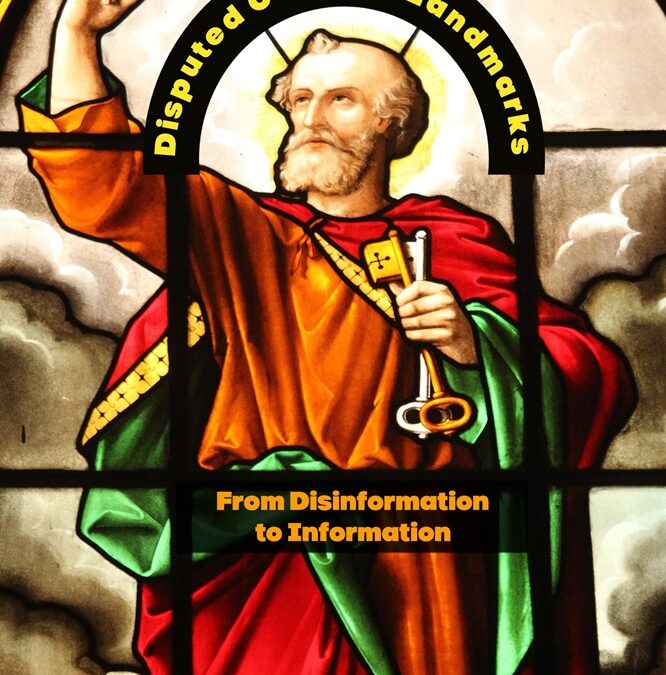
Everyone’s life has landmarks: when you were born, when you graduated from school, when you got your first job, when you got married, and so many more. There must be many landmarks in the history of the Catholic Church, too. Just think of issues such as the Crusades, the Inquisition, the Protestant Reformation, the Holocaust, and several more. What all of them also have in common is that they are disputed, challenged, and contested—ripe for discussion and open to various interpretations. Is it possible to dispel misinformation from people’s minds that are filled with prejudiced opinions? Verschuuren endeavors in this book to do just that, separating truths from untruths, facts from fictions, and information from disinformation.
Paperback: $18.99 | Kindle: $9.99
“In an age of Facebook factcheckers and politically correct cancelations, of ideological divisions even within the heart of our Church, Gerard Verschuuren has provided just the resource we need to bring clarity to confusion, order to chaos.” – Dr. Sebastian Mahfood, OP, co-author of Catholic Realism

Gerard M. Verschuuren is a human geneticist who also earned a doctorate in the philosophy of science. He studied and worked at universities in Europe and the United States. Currently semi-retired, he spends most of his time as a writer, speaker, and consultant on the interface of science and religion, faith and reason.
Currently, while semi-retired, he writes about issues at the interface of
All his books can be found at: www.where-do-we-come-from.com
The page you requested could not be found. Try refining your search, or use the navigation above to locate the post.

There is a ‘difference, both anthropological and moral, between contraception and recourse to the rhythm of the cycle: it is a difference which is much wider and deeper than is usually thought, one which involves in the final analysis two irreconcilable concepts of the human person and human sexuality’ (St. John Paul II, Familiaris Consortio, 32).
Human Nature: Moral Norm wades through a cultural mixture of challenging ideas which are either turning to sludge or starting to make sense, as if coming into clear water, enabling the whole book to find its central focus: Is it true that the human being is so well woven that the precept, “be open to life”, is inherent in the very psychosomatic language of a spousal love? In other words, although at times it is almost impossible to summarize or simplify the question under investigation, it nevertheless emerges that it is truly necessary “to be open to life” even when it is deliberately intended to avoid the conception of a child; and, at the same time, that this is a discovery of the content of the human inclinations, psychological structure and spiritual reality of the “one flesh” of marriage. Thus, in a word, the moral norm which is entailed in the reciprocal gift of self in marriage is neither foreign to “being-in-relationship” nor an imposition upon it; rather, “being open to life” is as natural to spousal love as the breath is to breathing. Indeed, the moral norm of being open to life is as integral to human nature as heat is to a flame – as the flame of life and love is to the divine spark which ignites it.
Paperback: $29.95 | Kindle: $9.99
Preface: A Synthesis; An Incomplete or a Complete Gift of Self; More Personally
Acknowledgements
A Brief Biography of and a General Foreword by Monsignor Livio Melina (An English translation with subheadings, by Stefan Kaminski, and then the original text in Italian).
General Introduction: A Comment on the Structure of the Book as a Whole (I); But Why write a Book that Draws on Humanae Vitae? (II); and an Introduction to Each Chapter (III)
Dr. Thomas D. Williams: A Biography and Complementary Account of the Difference between Contraception and Being Open: “An Introduction to: Theology of the Body and Humanae Vitae”
PART I
Part I: Being, Metaphysics, Soul and Body (Comprising Chapter 1)
Chapter One: Who is in Dialogue? Anthropology Comes into Focus: An Opening Word on Humanae Vitae (I); The Focus of this Book: A compound of Sense and Spirit (II); A Note on the Controversy surrounding Humanae Vitae (III); Two Naturalistic Fallacies: George Moore – but particularly David Hume (IV); St. Thomas Aquinas; St. John Paul II; and A Starting Point: The Language of the Body (V)
Suzanne Scheller: A Biography and Complementary Contribution to Part I: “How can one discover the truth about Humanae Vitae?”
PART II
Part II: The Naturalistic Fallacy: A Flawed Account of Human Nature and towards the Healing of the Fallacy of Uniformity (Comprising Chapters 2-3)
Chapter Two: Flaws and Fragments of an Answer: The Naturalistic Fallacy and its Flaw: Hume’s Naturalistic Fallacy (I); An Evaluation of Hume’s Fallacy (II); A Variety of References to Hume’s Fallacy (III); A Response to Hume: The First Act of Practical Reasoning (IV); The Possibility that Values are Integral to Facts (V)
Chapter Three: Types of Dualism Point to the Moment of Human Origin: The Fact-Norm Distinction and the Answering Nature of Man: The Fact-Norm Distinction as a type of Dualism (I); Dualism and Finality: Two Problems with Theories of Evolution (II); Other Traces of a Body-Soul Dualism (III)
Sr. Hanna Klaus: A Biography and Complementary Contribution to Part II: “How learning and practicing the Billings Ovulation Method (OM) enhanced the value of the person”
PART III
Part III: Drawing on the Doctrine of the Blessed Trinity: A Metaphysical Foundation to the Relationship of Human Action to Human Being (Comprising Chapter 4 and “Beginning to Go Forward)
Chapter Four: The unity-in-diversity of human being is an answer to the fallacy of uniformity: Restating the Problem: From fact to moral norm (I); God Reveals man to himself (II); The unity-in-diversity of law as embodied in human being (III); A metaphysical structure of Good, Right and True to human being (IV); and, Finally, the Personalization of Human Love goes beyond a comparison with animals to the mystery of the Blessed Trinity (V)
Beginning to go Forward: A “Watershed Summary” and “Three Objections to the Argument of the Book”
Dr. John Purk: A Biography and Complementary Contribution to Part III: : Dr. John Purk: “Openness to Life and Communion with The Most Holy Trinity”
PART IV
Part IV: A Spirituality of Being Open to Life (Comprising Chapters 5-6
Opening Chapter Five: The Founding Act of the Human Person: Being is a Unity-in-Diversity (I); Conception and the Actus Essendi of the Human Person (II); Confirmation of this View of Conception (III)
Closing Chapter Five: The Attitude-in-Action of Procreation: The Inclination to Procreation (I); the Person-as-Gift is Interior to Spousal Love and Procreation (II); The Bodily-Personal Action of Procreation (III)
Chapter Six: Be Open to Life: The Spiritual Significance of Being Open to Life: The Covenant of the Flesh (I); The Activity of the Holy Spirit (II); A Spirituality of Being Open to Life (III); The Christo-Trinitarian Significance of this ‘Openness’ (IV); and, Finally, the Social and Inseparably Eschatological Dimension of Being Open to Life (V)
Dr. Moira McQueen: A Biography and Complementary Contribution to Part IV: “The McQueen Family: 2XX 5XY”
PART V
Part V: The Word of Truth-in-Love and Conscience (Comprising Chapter 7)
Dr. Mary Shivanandan: A Complimentary Contribution to Part V: A Biography and Personal Journey: “My Experience with Natural Family Planning”
A Postscript and References by Francis Etheredge
A Further, Triptych of Experience: Part I of III: Being Open to Life: Being Open to Being-in-Relationship: Wrongdoing and psychology; Sin, Salvation, Suffering and the Marriage Covenant; The Mystery of the Marriage Covenant; and Natural Family Planning
A Touch of Experience: Part II of III: Where Are You? Contraception and Abortion as the Denial of “Relationship”; Rediscovering the Value of Evidence; Evidence and Sex-Trafficking; Evidence and the Environment; In the Case of an Abortion; Does “not being pregnant” Define a Man?; Hope and Forgiveness: Forgiveness and Hope
Dr. Christine M. W. Ward: Biography and “The Lived Experience of Contraception”: Part III of III: The Lived Experience of Contraception; A Different Act; Love’s watermark: the total self-gift
Chapter Seven: Conscience-as-Relationship Entailing Recovery from Error: The first part of the chapter follows with a specific consideration of principles and experience (I). It will then go on and develop an account of the conscience as integral to the person and as a witness to the truth of our relationships (II). Drawing on saints and scholars it is possible that conscience and the word of God entails a dynamic relationship that could prompt, possibly, the “un-doing” development of an erroneous conscience (III)
“A Pain-Breaking Word” of Encouragement (Prose and Poem)
CONCLUSION
Dr. Richard Spinello: Biography and an “End Word”
“Humanae Vitae, the Magisterium, and Justice to the Creator
“What a wonderful book! What a tour de force!!! I have fallen in love with Etheredge’s Human Nature: Moral Norm: it is a fresh and often poetic new look at deep fundamentals. This is an analysis that transcends such categories as phenomenological/traditional metaphysics with a new and compelling synthesis. I want to pass it on to some professor who is still teaching ethics regularly. Glory!” – Dr. Ronda Chervin, Emerita Professor of Philosophy, Holy Apostles College and Seminary, and author of numerous books about Catholic ethics and spirituality
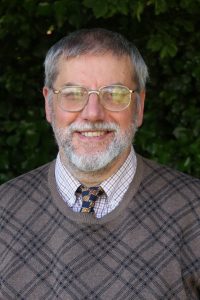 Mr. Francis Etheredge is married with eight children, plus three in heaven.
Mr. Francis Etheredge is married with eight children, plus three in heaven.
Francis is currently a freelance writer and speaker and his “Posts” on LinkedIn can be viewed here. Poetry; short articles; autobiographical blog; excerpts from books; and “Philosophize: A Ten Minute Write.”
For a list of all of Francis’ books published by En Route Books and Media, click here.
See Francis’ other books, too, entitled Scripture: A Unique Word, From Truth and truth: Volume I-Faithful Reason, From Truth and truth: Volume II: Faith and Reason in Dialogue, From Truth and truth: Volume III: Faith is Married Reason.
He has earned a BA Div (Hons), MA in Catholic Theology, PGC in Biblical Studies, PGC in Higher Education, and an MA in Marriage and Family (Distinction).
Enjoy these additional articles by Francis Etheredge:
The page you requested could not be found. Try refining your search, or use the navigation above to locate the post.
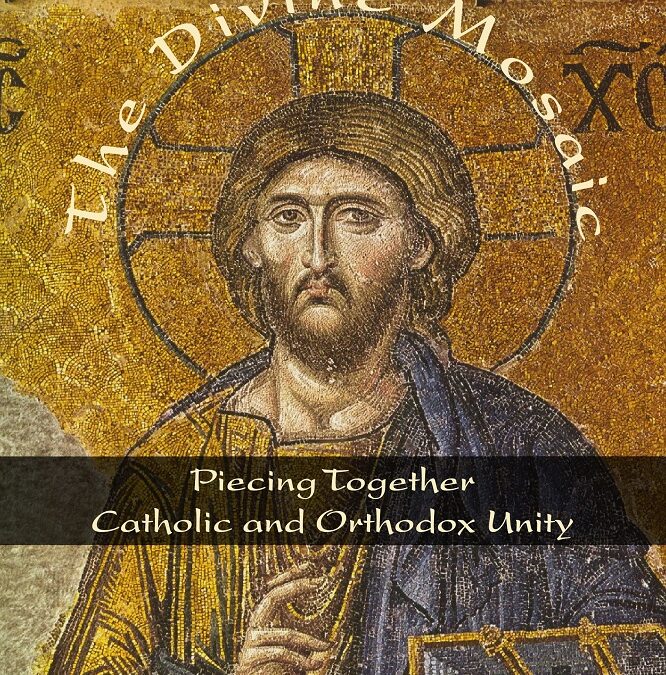
This book collects essays, speeches, and presentations given over the course of James Likoudis’ seven decades as a Catholic. As a convert from Eastern Orthodoxy, he has devoted the greater portion of his life to the work of ecumenism, “that they all may be one” (Jn. 17:21). Within these pages, he refutes common objections to Catholicism as well as provides a sound basis for a truly Catholic ecclesiology. It is hoped that this book will be a welcome contribution to ecumenism and will bring the Church of Christ, which subsists fully within the Catholic Church, that much closer to healing its wounds and offering a vision of a united Christianity to the world–a prerequisite of fulfilling the mission entrusted to it by Christ.
Paperback: $29.95 | Kindle: $9.99
“What are the principal obstacles to the prospects of Catholic–Orthodox unity? Dr. James Likoudis, himself a convert from Greek Orthodoxy, offers a unique and challenging answer in this marvelous new collection of essays, articles, and speeches: the chief impediments are not primarily the dogmatic divides between Orthodoxy and Catholicism, but rather the internal divisions—both administrative and magisterial—within and between the Byzantine Orthodox churches themselves. Without descending into triumphalism, Likoudis makes a fraternal, detailed and compelling case that the underlying historical issues inherent in Orthodoxy’s presumptive imperial ecclesiology without an emperor and synodality without the Divine Primacy leads to a divisive power vacuum which can only and ultimately be filled by the diaconal service of the Apostolic See of Rome.” – Fr. Daniel Dozier, MA, Adjunct Professor of Sacred Scripture, Byzantine Catholic Seminary of Saints Cyril and Methodius; Author of 20 Answers on Eastern Catholicism
“In these essays Dr. Likoudis addresses the stumbling blocks that stand in the way of reconciliation. He tackles the historical roots of these controversies while dispelling strawman arguments against Catholic ecclesiology. In doing so, he demonstrates that Eastern Orthodoxy and Catholicism are not as far apart as some Orthodox apologists would have us believe.” – Rev. Deacon Anthony Dragani, PhD, Professor of Religious Studies, Mount Aloysius College; Author of Adrian Fortescue and the Eastern Christian Churches
“I’m thrilled to learn of the publication of The Divine Mosaic: Piecing together Catholic and Orthodox Unity. For many years its author, James Likoudis, has been a tireless laborer for fraternal dialogue between Catholic and Orthodox Christians. Few know these two ecclesial worlds so thoroughly and few can so successfully untie the knots of misunderstanding that have gotten in the way of reconciliation. My hope is that this important collection of essays will receive a careful reading from those in East and West that care about the unity and catholicity of Christ’s Church.” – Marcellino D’Ambrosio, PhD, Senior Fellow, St. Paul Center for Biblical Theology; Author of When the Church Was Young: Voices of the Early Fathers
“In our modern era of mass communication, the Ecumenical work of reunion will not be carried out in full without lay involvement. And there is, perhaps, no member of the laity of either of the “two lungs” of apostolic faith that has done more to further the dialogue than James Likoudis. In his masterpiece: The Divine Mosaic: Piecing Together Catholic and Orthodox Unity, we have laid out for us the intellectual framework that all of us can benefit from. Whether you are a seasoned apologist, theologian, or philosopher, and whether you are clergy or laity, you are going to benefit and learn from this great work. It is my prayer that every Catholic who is serious about his or her faith will place this book at the top of the list of necessary reads. If you are reading this, you may well have already bought the book. My advice is to buy some more copies for friends.” – Tim Staples, Senior Apologist, Catholic Answers; Author of Behold Your Mother: A Biblical and Historical Defense of the Marian Doctrines (From the foreword)
“Dr. Likoudis balances between the extreme of pretending that there are no significant differences between Catholics and Orthodox, and the other extreme of consigning one another to the darkest pits of Hades. Dr. Likoudis is a living example of how to dialogue with the Orthodox about important differences without falling into a rigid fundamentalism that refuses to see grace present in the Orthodox church.” – Michael Lofton, Founder, Reason and Theology; Author of Answering Orthodoxy: A Catholic Response to Attacks from the East (From the afterword)
The page you requested could not be found. Try refining your search, or use the navigation above to locate the post.
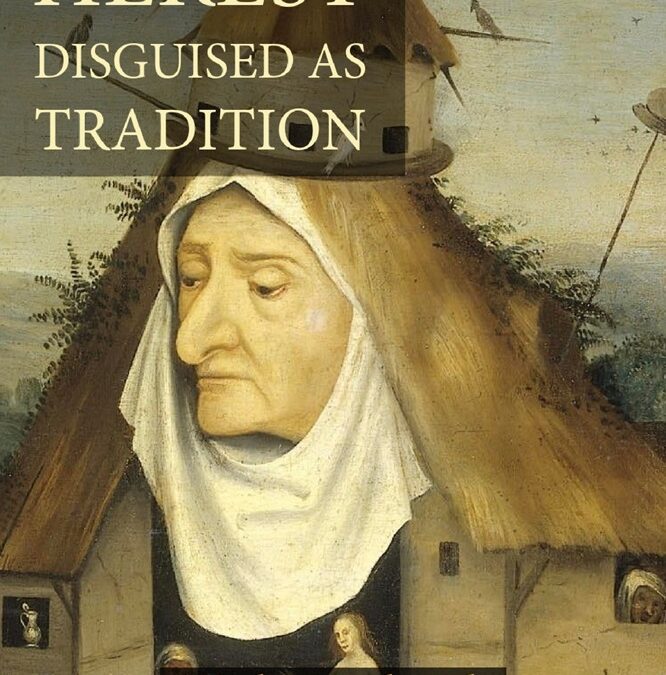
A widespread assertion in Catholic circles today is that one can disregard the teachings of Pope Francis or the Second Vatican Council if they teach something that seems to go against tradition. Is this the case? In this book, Pedro Gabriel proves that tradition is often confused with novelty. He also shows how several heresies of the past have historically claimed to be more traditional than the living magisterium.
Paperback: $24.95 | Kindle: $9.99
“Pedro Gabriel displays the same admirable qualities found in his other writings, viz., careful research, clear argumentation, and charitable but cogent refutations of the false claims made by papal critics. Although Dr. Gabriel is very well-versed in theology, he is a medical doctor … by training and profession. In Heresy Disguised as Tradition, his medical training is apparent. He is able to diagnose the cancer of false theology disguised as tradition and expose its pathological qualities.” — Dr. Robert Fastiggi, Professor of Systematic Theology, Sacred Heart Major Seminary, Detroit, Michigan
“Pedro Gabriel has the gift of giving transparent and honest answers to intricate questions. Now in this book he explains what Catholic Tradition is. One of the plagues of the current discussion on the Pontificate of Pope Francis are the traditionalists who do not know the tradition of the Church. To propose the same truth in a different context, in front of a different culture and of different challenges it is not enough to repeat the same words. The words are always interpreted in a context. It seems that there is only the choice between severing ourselves from the culture we live in in order to become men of the culture in which the Tradition ( that encompasses the Scripture) was originally formulated ( but then we lose the capacity of enlightening with the words of the Scripture the dilemmas of the world of today) or to read the Scripture in the light of the Spirit of Our Time ( but then we lose the capacity of affirming those truths that our time is unwilling to accept and instead of transforming ourselves according to the Spirit of Jesus we transform Jesus according to our Mind). The Catholic answer is that God has instituted through the sacrament of order and the Primate of Peter the appropriate context for the interpretation of his Message.This context is at the same time in time and out of time. Without the assistance of the Holy Spirit there can be no Tradition, or at least no Catholic Tradition. This is the reason why it is not possible to oppose the catholic Tradition to the Primate of Peter. Simul stabunt, simul cadent ( together they stay or together they fall). The reader will find clear answers in a language that is easy to understand and in which a fervent love to Tradition and to the body of Christ incarnate shines through.” — Rocco Buttiglione, Member of the Pontifical Academy of Social Sciences and of the Pontifical Academy of St. Thomas.
“Pedro Gabriel has succeeded in articulating an impassioned Catholic defense of the true Tradition against its pseudo-traditionalist deformations. Nothing could be more timely to understand – once and for all – that the Holy Spirit has not gone on vacation and constantly assists all successors of Peter in leading and governing the Church.” — Rodrigo Guerra Lopez, Secretary of the Pontifical Commission for Latin America.
“Pedro Gabriel offers a well-written and deeply researched defense of Catholic teaching in response to the errors of contemporary Catholic traditionalism. Dr. Gabriel engages directly with the arguments of radical traditionalists and offers a thorough response, leaving no stone unturned. The book emphasizes the Church’s doctrines regarding the papacy, especially the crucial role of the pope in maintaining the Church’s unity and as the guarantor of orthodoxy. I highly recommend this book to anyone interested in Catholic ecclesiology who wants to understand the ongoing debates about authority and tradition in the Church.” — Mike Lewis, Co-Founder and Editor of the website Where Peter Is.
“This book is a breath of fresh air. Dr. Gabriel wrote a book that spoke right to me. When he makes his arguments, I think, get out of my head. Finally someone has put together a cohesive book that refutes the ideology behind radical traditionalism. He lays out perfectly how this ideology matches that of heretics in the past. Great work, Dr. Gabriel! Your work is greatly appreciated!” – Josh Anderson, Amazon Reviewer, 5 Stars!
The page you requested could not be found. Try refining your search, or use the navigation above to locate the post.